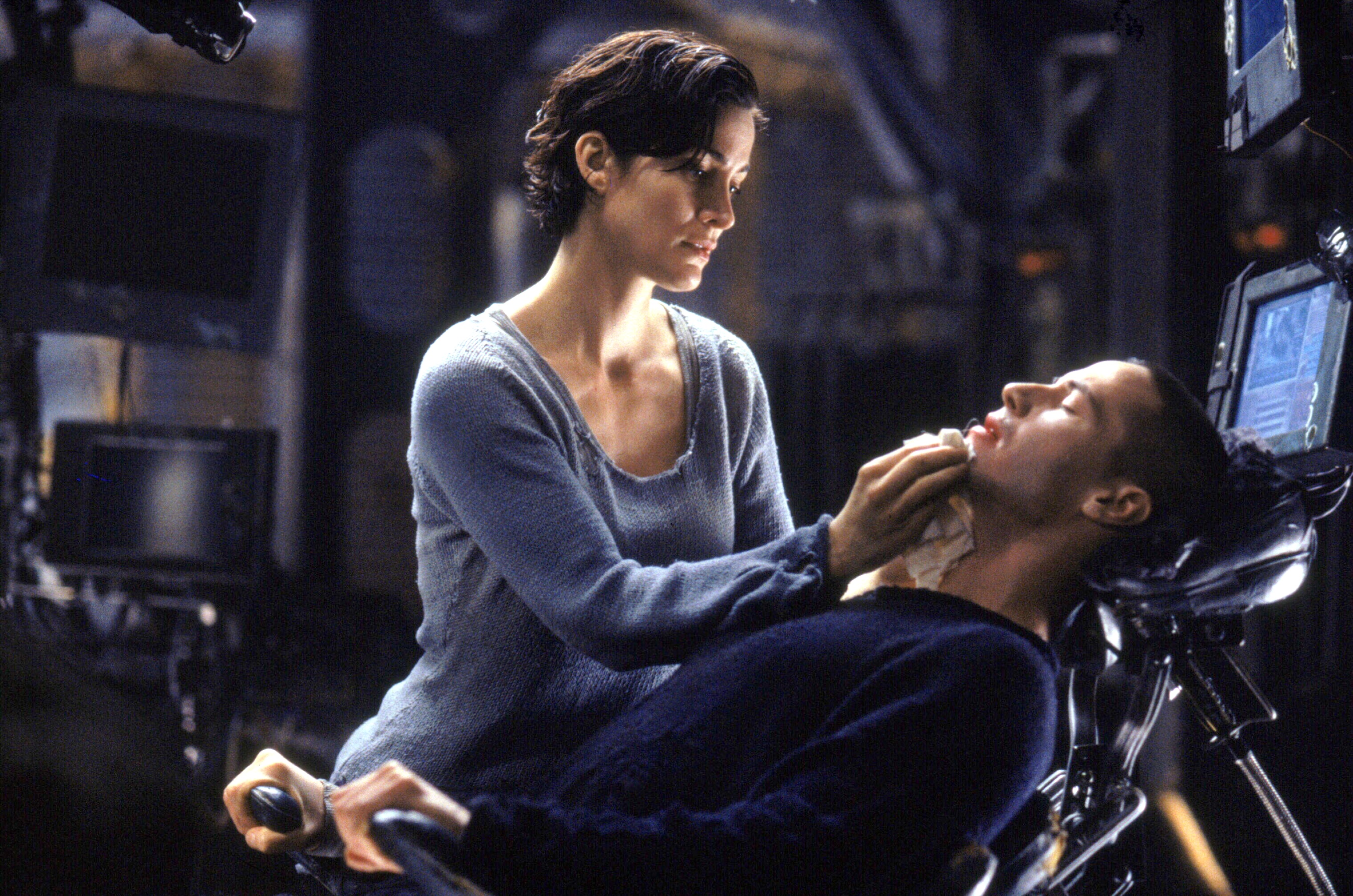
Learning is one of my favorite things to do.
There’s nothing that matches the high you get from connecting the dots – when everything ‘clicks’ and suddenly, what was once utter confusion, becomes a tool for your mind.
You’ve slain the dragon.
This process of epiphany is something I seek out constantly. The power of knowledge.
Going from ignorance to enlightenment is how humans acquire power in the 21st century.
In previous generations, physical strength, or heredity, was the main avenue to acquire power – but with the invention of various technologies, this power acquisition dynamic has shifted from ‘the strongest’ to ‘the smartest’.
The general point of school, the education system, and teachers in general, is to tell you 1) what’s important about a subject and 2) lay this information out in a logical format as to increase the efficiency of a groups learning.
The information teachers teach is no different than the information you find on google. This is a fact.
If you’re willing to work through peer-reviewed essays and highly technical whitepapers, you’re consuming the same high level information your teachers are.
In fact, I think having someone actively TEACH you something is the worst way to truly learn and understand.
You don’t learn from getting information thrown at you – you end up memorizing things out of context from the big picture.
This does you no good as you don’t know how to actually apply this learned information in a useful manner.
Teachers give you tools to easily identify & memorize what’s important. This is an artifact of the previous framework for learning / teaching.
We needed factory workers, not original thinkers and problem solvers.
Teachers don’t teach you how to understand a concept – that’s a process that happens internally.
Everyone has a different process for learning and getting things to stick, but I think fundamentally we’re all tapping into the same basic framework.
———
I’ve found a repeating pattern in the process of going from a state of confusion to a state of understanding.
Looking back, I can recognize this pattern in everything I’ve every learned – from design, to music, hacking, math, physics, chess, and everything in between.
You start in a place of pure confusion & curiosity. You don’t have any idea how something works, but you’re interested in learning more.
You begin to learn, and you don’t get it.
It doesn’t make sense.
You can see the finished product, but don’t understand how or why each piece fits together internally to create the bigger picture.
You keep going, and slowly it begins to click. Piece by piece. Brick by brick.
Finally, you’re able to do the thing you wanted to do once or twice — you know it’s possible, you’re just not great at it… yet.
You’re still not quite sure why it works in some cases and not in others – but you’re now confident you’ll be able to get good in time.
As you complete more work, you start to notice your own patterns and mistakes from previous iterations.
You can anticipate where you’ve been caught up in the past, and parry the upcoming roadblock as you see them in the distance.
———————
Step 1: Take a Test. Fail.
You need to start by failing. This is important because it gives you an idea of what to expect as you move forward in your learning process.
You need to know what you’ll need to know, because you don’t know what you don’t know. Meta, but it’s true.
This initial test will show you what information is important, as well as give you the ability to filter out what’s not important as you move forward in your research.
Step 2: Consume Information.
Consume tons of relevant information and all adjacent concepts.
Watch videos. Read wikipedia articles. Whitepapers. Comments on Reddit. StumbleUpon.
Don’t stick to any one viewpoint for a long time.
It’s also key to not act on any of the things you’re learning. It’s not time for that yet.
You can save the things you think are important to refer back to when it’s time to execute, but this stage is about consuming A LOT of information.
The goal in this stage is to get a very broad view of the topic.
Once you’ve consumed a little of everything, you can drill down into the things you’ve identified as important.
You don’t know whats important until you know everything that’s available.
It’s also great to consume content with views opposing your own.
The act of reading, analyzing, breaking down an argument, and refuting it with the other things you’ve learned is a good way to solidify your own original conclusion on a topic.
Step 3: Write.
Summerize everything you’ve learned in an essay where the reader is imagined to be a 5 year old.
Just a few days or weeks ago you were utterly confused. This 5 year old is in a similar position.
You want to write to a 5 year old because it forces you explain things that you would typically gloss over.
This is an oversimplification, but for the sake of an example – the sentence ‘I jumped off the bridge’ may not make sense to a 5 year old.
What is ‘jump’ and what is ‘bridge’?
This forces you to go back further in your explanation, giving your writing more detail.
For example:
‘Typically, our feet stay on the ground. This is because of gravity, a force that occurs naturally on earth.
When we move our knees down and push our leg muscles off the ground, we can temporarily overcome gravity and leave the ground. This is called a ‘Jump’.
So yesterday, I was going for a walk near the river, and wanted to get to the other side.
They built this structure over the river called a ‘bridge’ – it connects both sides of land together so cars can drive over the water.
While I was there, a car began driving right at me. I didn’t want to get hit.
I jumped off the bridge.’
The point is – a 5 year old doesn’t have the same ‘catalog of references’ a typical adult uses to explain and understand the world around them – so explaining to them forces you to simplify your writing and decrease the amount of extraneous references.
It forces you to get to truly understand your topic on a fundamental level.
The goal is to have writing to be self-referential.
You don’t want people to have to look up additional information to understand what you’re saying.
Everything a reader needs to know about a topic should be contained within your paper.
This makes your writing very granular and will give you a deep understanding of what you’re trying to explain.
Step 4: Re-Take the Test
At this point you’ve learned a huge amount, as well as written a logical outline of how everything fits together in the real world.
Taking the test now, you should theoretically get 100% (however you choose to grade yourself — this doesnt really matter).
You should be able to now execute the test you failed earlier.
If you actually learned and understand, the test is moot – you’ll be good and you’ll know it. You can probably just skip this step.
Step 5: Create a huge volume of work.
This is the final stage of understanding.
You need to implement the thing you’ve learned in a variety of different ways.
This will give you a broad understanding and domain mastery over the subject you’ve learned.
It’s only in the fine grained details that you become a master at something, and a master is essentially someone who’s seen it all before.
They can solve any problem not because they have super powers, but they’ve done it before. It’s simple.
They learned the basics, and spent time figuring out how to solve problems along the way.
They became a master when a majority of the new problems that came their way were pre-solved from their past work.
https://www.youtube.com/watch?v=3ResTHKVxf4
———
The base of this framework stems from the saying ‘learn one, do one, teach one’ …
This was something I heard when I was younger, and it really worked for me.
Here’s a real world example of how you could implement this framework:
If you want to learn how to design logos, your ‘test’ wouldn’t be a paper test, but an execution test.
Your test is to pick a beautiful logo, and try to copy it as close as you can.
You won’t, and shouldn’t have the skills to actually execute it. Your version should really suck.
The test in this case may take a few days to complete, as you’re not skilled, and don’t know what you’re doing. You need to give yourself time to explore, mess up, start over, and grind.
You’ll get 90% of the way there and hit a roadblock – you’ll forget to save your file.
You’ll need to start over, but you’ll always remember to save your file from now on.
You’ll end up with 100’s of unnamed layers and spend tons of time searching for the thing you need. From then on you’ll name your layers when you create them.
These struggles are core to your learning process.
Once you complete the initial test, you will have a horrible attempt at a logo.
Now you can close your design programs, and spend a week learning everything you can.
Read tutorials, design theory, color theory, psychology, UI. Test existing apps, write down what you like / dislike.
During this time, take notes, but don’t open your design program yet – you need to consume as much information as you can, without ‘getting it out’ or actually doing it.
The next step is to write about designing a logo… What are the simple steps needed to execute the logo you did in your test?
Without actually designing it – write out each step in an essay, talking to someone who’s looking to learn what you just learned in your days of consuming information.
Start very basic and build upward – explaining every detail along the way.
Once the essay is complete, open up the design software again and execute the steps you yourself outlined in your essay.
You now have the skills of a designer.
The final step is to do a huge volume of work.
Make 1,000’s of logos.
Sometimes you’ll create a logo that requires you to do something odd. Or something doesn’t work exactly as you thought. Or you love a design but a client hates it. This is where the real ‘learning’ comes to play.
You only get these odd use cases when you undertake the journey of creating a huge volume of work.
Then, in the future, when you’re faced with designing something complex, you have all these odd use-cases in your brain, and you can pick on the 1-2 that would be perfect for the thing you’re working on.
Congrats, you’re a designer now!
The only thing holding you back was a lack of information – but your curiosity and persistence broke down that barrier.
Power is mastery over yourself and your environment.
Don’t let a little confusion hold you back from acquiring true power.
– J


